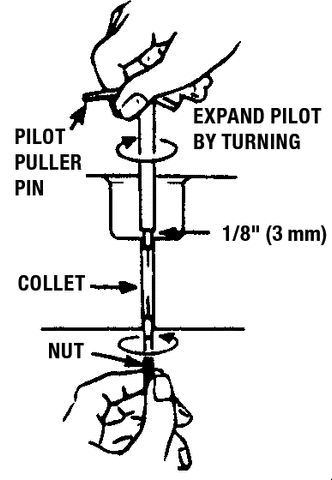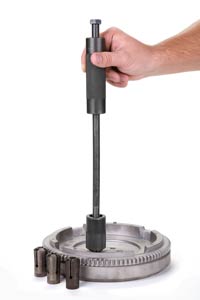The Anatomy of a Valve Seat Cutter Blade

Every multi-angle Valve Seat Cutter Blade has two essential measurements and three essential angles. Top Width, Seat Width, Main Angle, Top Angle and Throat Angle. Of course, as the blades become more complex there will be additional angles, measurements, radii ... you name it.
We don't have the room to cover all of the theory behind the angles and how they create air flow in this article, but you can find some great stuff out on the internet if you search. Keep in mind, though, that not everyone knows what they're talking about. Get your information from a reliable source.

 Select an expanding pilot that is the same diameter as the valve guide ID.
Select an expanding pilot that is the same diameter as the valve guide ID. The article includes a section on the Full-Torque spark plug thread repair system, specifically referencing P/N FT-514LTK. Unfortunately, Goodson doesn't carry this product any longer, but it is still available directly from
The article includes a section on the Full-Torque spark plug thread repair system, specifically referencing P/N FT-514LTK. Unfortunately, Goodson doesn't carry this product any longer, but it is still available directly from 


